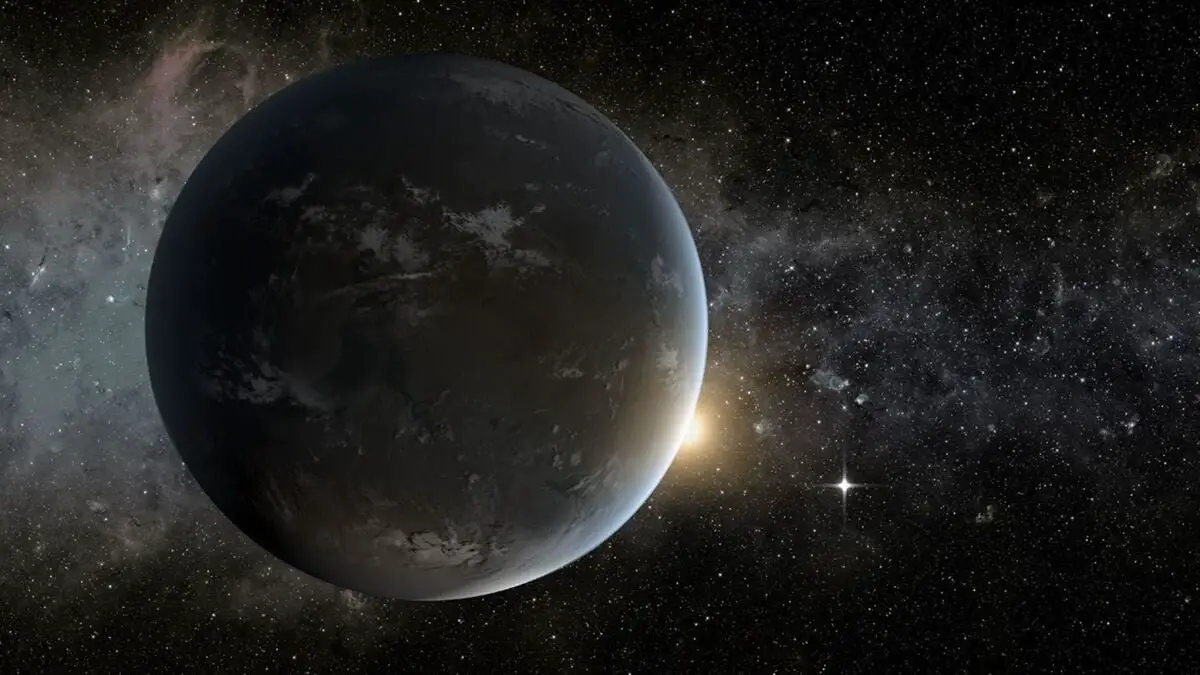Astronomers got lucky.
NASA has confirmed over 5,780 worlds beyond our solar system, called exoplanets. But it’s rare to detect a juvenile, still-maturing planet, because they inhabit chaotic systems that are flush with obscuring dust and gas. By chance, this distant debris has parted, allowing researchers using the sensitive cameras aboard the space agency’s Transiting Exoplanet Survey Satellite (TESS) to spot such a planet.
“A huge planet with a long name – IRAS 04125+2902 b – is really just a baby: only 3 million years old,” NASA recently explained. “And because such infant worlds are usually hidden inside obscuring disks of debris, it is the youngest planet so far discovered using the dominant method of planet detection.” (For reference, our middle-aged planet, Earth, is some 4.5 billion years old.)
NASA scientist viewed first Voyager images. What he saw gave him chills.
Most exoplanets today are discovered by the “transit method,” wherein a telescope watches for slight dips in a star’s brightness — caused by a transiting planet. Although the method doesn’t work if the star and greater solar system are shrouded in debris, a research team found that the ring of debris in IRAS 04125+2902 b’s solar system has become “sharply warped,” thus revealing the baby world. Their research is published in the science journal Nature.
Mashable Light Speed
What might have caused this unusual warping? It’s unclear, though the researchers have ideas. Unlike the sun, most stars have stellar companions (called binary systems), including the stars in this distant solar system. It’s possible that this companion star’s gravity and influence could have stoked a shift in the nascent planetary disk; however, there’s no evidence of such an effect. It’s also possible the young planet got bumped out of its obscured orbit by another larger object in space, but there’s no evidence of that yet, either.
The young world, some 430 light-years away, orbits close to its star and has a mass that’s at most one-third of the gas giant Jupiter, yet measurements show it’s about the same diameter as Jupiter (at 88,846 miles, or 142,984 kilometers, across, Jupiter is 11 times wider than Earth). This suggests its developing atmosphere is inflated, and will trim down. But into what?
An artist’s conception of the young world IRAS 04125+2902 b in front of its star. To the left is the developing solar system’s thick ring of dust and gas.
Credit: NASA / JPL-Caltech / R. Hurt / K. Miller (Caltech/IPAC)
Over many millions of years, NASA suspects the young world could mature into either of the most common planets found in our Milky Way galaxy: a “super-Earth” or mini-Neptune.
A mini-Neptune, as it sounds, is a gaseous world between the size of Earth and Neptune. A super-Earth, of which astronomers have found many intriguing examples, is a world ranging from some 30 to 70 percent bigger than Earth. It can be rocky (like Earth) or largely composed of thick, swirling gases. Or both. Around one-third of exoplanets discovered so far are super-Earths, meaning they’re awfully common in other solar systems. And if they inhabit, or eventually inhabit, a temperate region of a solar system, such a rocky world could potentially harbor water, a crucial ingredient for life on Earth.
Your future is long-lived and open, IRAS 04125+2902 b. What will you become?

